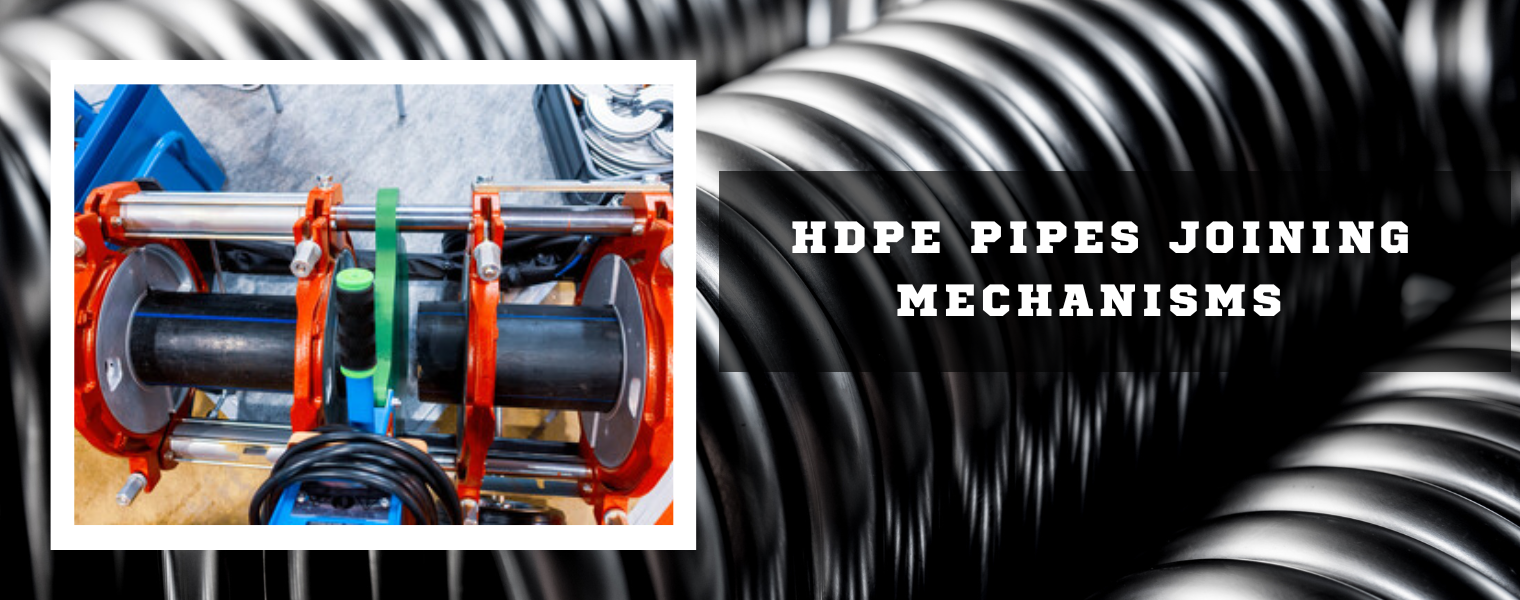
As more high-quality pipes are required for undersea marines, systems, gas distribution, water systems, and PE piping, their use is expanding. The need for straightforward HDPE pipe connecting techniques grows along with the need for piping products.
The manufacturers of HDPE pipes have created a comprehensive system that is compatible with a wide range of fittings and parts. You must educate yourself about Hdpe pipe fittings before looking through the collection. User will have the information that need for the subsequent application if you learn about Hdpe pipe fittings.
In pipe systems, a fitting or connector are used to join straight pieces of pipe, adapt to various diameters or forms, and serve other functions including regulating fluid flow.
High-density Poly Ethylene pipe fitting is known by the abbreviation Hdpe Pipe Fittings. A variety of mechanical fittings, which are readily available from the respective manufacturers, can be used to connect Hdpe pipes to pipe made of other materials. These can either be flanges couplings or transition couplets to directly join the pipes.
The HDPE pipes cannot be assembled using glue or solvents, in contrast to the PVC pipes and ABS pipes. Either heat welding or mechanical joining must be employed to connect the pipes. Following are the mechanism used to assemble the hdpe piping system.
One of the easiest techniques for joining Hdpe pipe is Electro-fusion fitting, or EF. Copper coils are used in EF, which is wound through the fittings inside. The pipes are then inserted into the fitting on either side, and the coil is then shocked with an electric current. The copper coil is heated by the current melt, which causes the fitting and the pipe to fuse together. The pipes are permitted to cool when the heat process is over, and they come from a solid junction. To be effective, electrofusion must be carried out correctly. Additionally, there must be adequate contact while joining and cooling.
Another method for joining the Hdpe fittings is by Butt-fusion or butt welding. The procedure involves cutting the ends of the two pipes with a specialized hydraulic clamping machine. The hot plate is mounted onto both ends of the pipes after they have been correctly trimmed. Once heated, the plates are withdrawn, and the two ends are forced together to cause melting. This joining technique results in the formation of an elevated beam. When a relatively smooth bore is required, this may be a problem. Although it is feasible to eliminate the bead, doing so can cause additional connection issues.
Make sure the parts are clean before joining them together if you want the greatest joint possible. The likelihood of contamination may increase if the surfaces are dirty. Make sure you weld at the proper temperatures and pressures, and to give the pipe enough time to fuse.
Hdpe pipes and fittings connections may use a hot-melt coupling. Manual hot-melt sockets, hot-melt butt couplings, and threaded connectors should not be used to connect hdpe pipes and fittings with nominal outer diameters larger than or equal to 63mm, less than 6mm, or made of plastic.
Any of the aforementioned techniques can be used to join Hdpe pipes of various grades. However, the operation must be done out in a controlled environment for the optimum results. Additionally, you must be careful not to let the thinner pipes collapse while the fusion is occurring. It is preferable to speak with the hdpe pipe and fitting supplier if you are unsure. Be aware that fusing Hdpe of different grades may cause the optimum operating pressure to decrease.
With the help of various mechanical fittings, which are available from pertinent manufacturers, the Hdpe pipes can be joined to other materials. You might need to join the pipes directly using the flange option, based on the kinds of hdpe pipes you'll be employing. The outer body of the pipe must be compatible with the pipe being joined for the connections to be successful.
HDPE pipes can be connected using the above explained method. Polyfab provides the best HDPE pipes and Welding Machine in Ethiopia, Kenya and Ghana.Due to our scale and skills, we can meet your HDPE Pipe needs anywhere in Ethiopia, Kenya, Ghana, the UAE, and internationally.
Our HDPE pipes and fittings have high durability which makes them the customer's first choice in Ethiopia, Kenya, and Ghana. Contact our sales team to know more about HDPE pipes and Fittings.